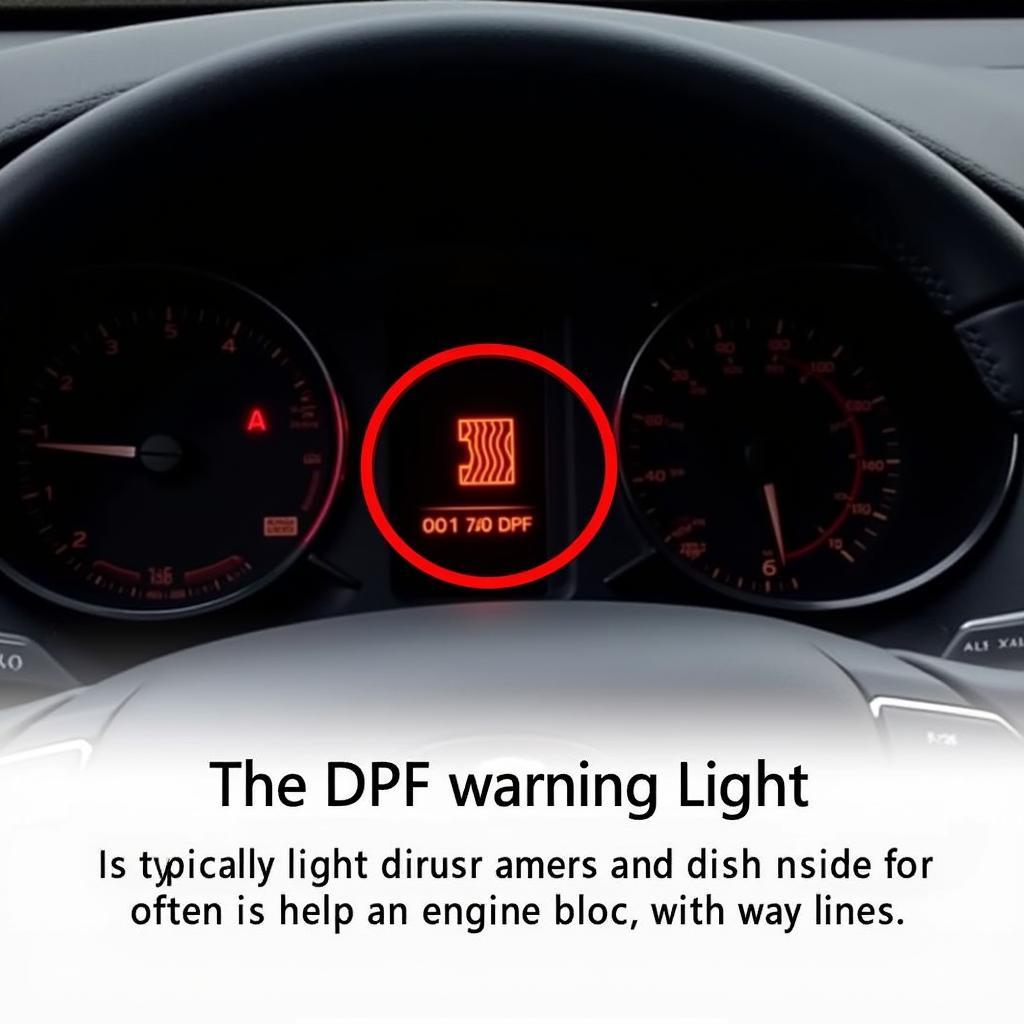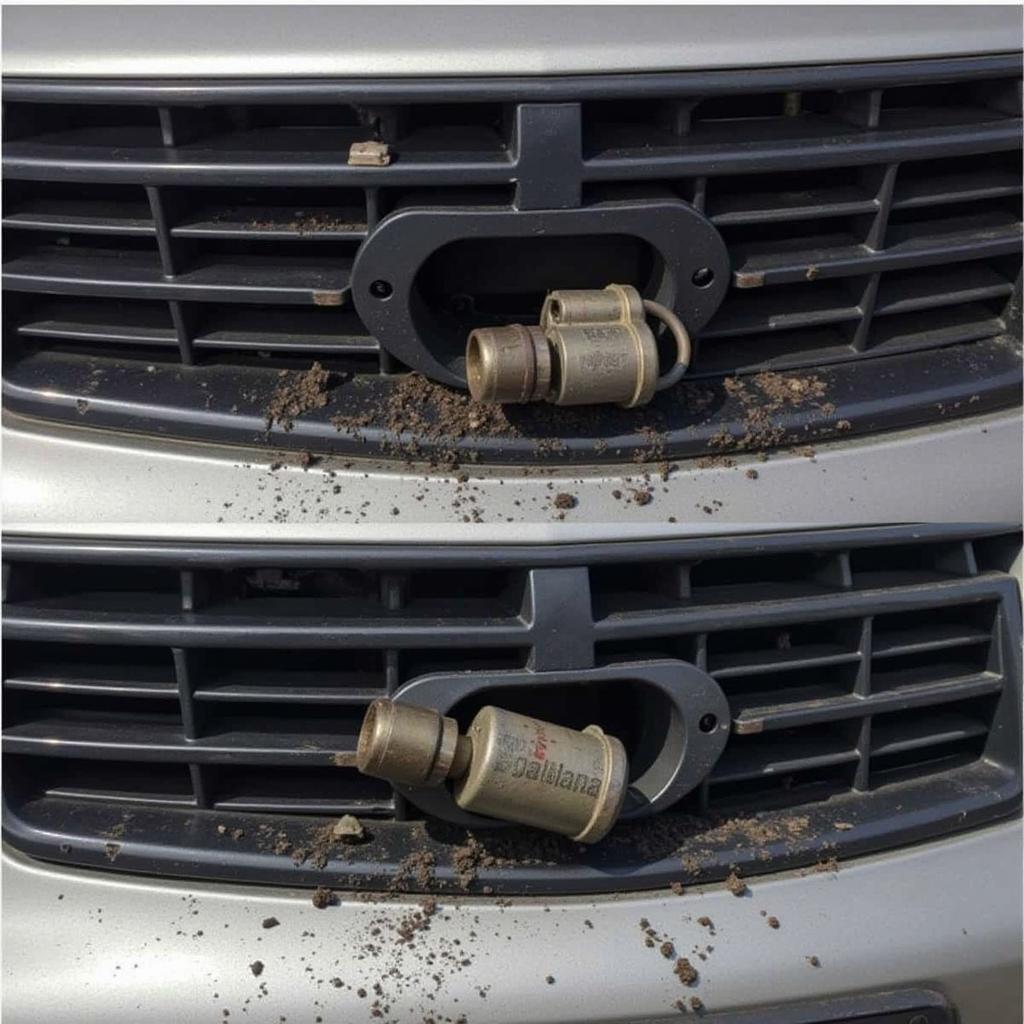You’re driving your Kia Optima, and everything seems fine until you glance over and see the dreaded “Passenger Seat Belt Warning” light on, even though no one’s in the passenger seat. Frustrating, right? This issue, often referred to as the “phantom passenger,” is more common than you might think, particularly in Kia Optimas. While a cell phone resting on the passenger seat might temporarily silence the warning, it’s not a permanent fix. Let’s explore why this happens and, more importantly, how to genuinely resolve it.
Understanding the Kia Optima Passenger Seat Belt Warning System
Your Kia Optima is equipped with a Seat Belt Reminder System (SBRS) designed to enhance safety by encouraging seat belt use for both drivers and passengers. This system utilizes a sensor, usually located within the passenger seat itself, to detect weight and pressure. When the sensor detects weight, it assumes a passenger is present and triggers the warning light and chime if the seat belt is unfastened.
Why Does My Kia Optima Think There’s a Passenger?
The “phantom passenger” phenomenon in Kia Optimas can stem from several reasons:
- Sensitive Seat Sensor: The most common culprit is an overly sensitive weight sensor in the passenger seat. Even a slight weight difference, such as a heavy object in the seat pocket or a change in temperature, can be enough to trigger the sensor.
- Faulty Seat Belt Buckle: A malfunctioning passenger-side seat belt buckle can send incorrect signals to the SBRS, leading it to believe the seat is occupied even when it’s not.
- Software Glitch: Occasionally, a software glitch within the car’s computer system can cause the SBRS to malfunction, resulting in a false passenger detection.
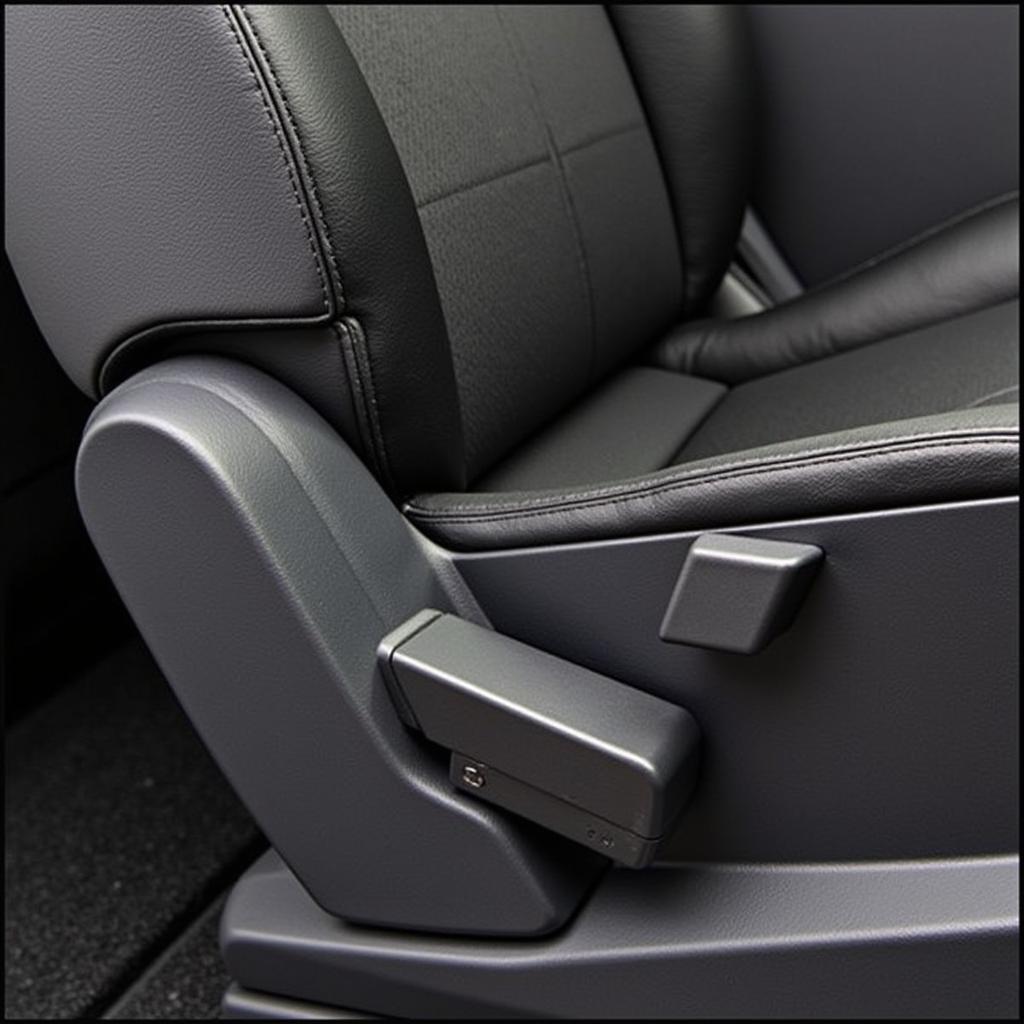 Kia Optima Passenger Seat Sensor
Kia Optima Passenger Seat Sensor
Debunking the Cell Phone Myth
Placing a cell phone on the passenger seat might momentarily trick the weight sensor due to the phone’s weight. However, this is a temporary fix and not a recommended solution. The sensor can still be triggered by the phone shifting or a slight change in the car’s position.
How to Fix the Kia Optima Passenger Seat Belt Warning
Here’s a step-by-step guide to addressing the issue:
- Check for Objects: Start with the obvious. Thoroughly inspect the passenger seat, including the seat pocket, underneath, and any crevices, to ensure no objects are triggering the sensor.
- Inspect the Seat Belt Buckle: Examine the passenger-side seat belt buckle for any visible damage or debris. Ensure the buckle is clicking in and out smoothly.
- Reset the System: Sometimes, a simple reset can resolve temporary software glitches. Disconnect the car battery’s negative terminal for about 15 minutes, then reconnect it. This process might vary slightly depending on your Kia Optima’s model year; refer to your owner’s manual for specific instructions.
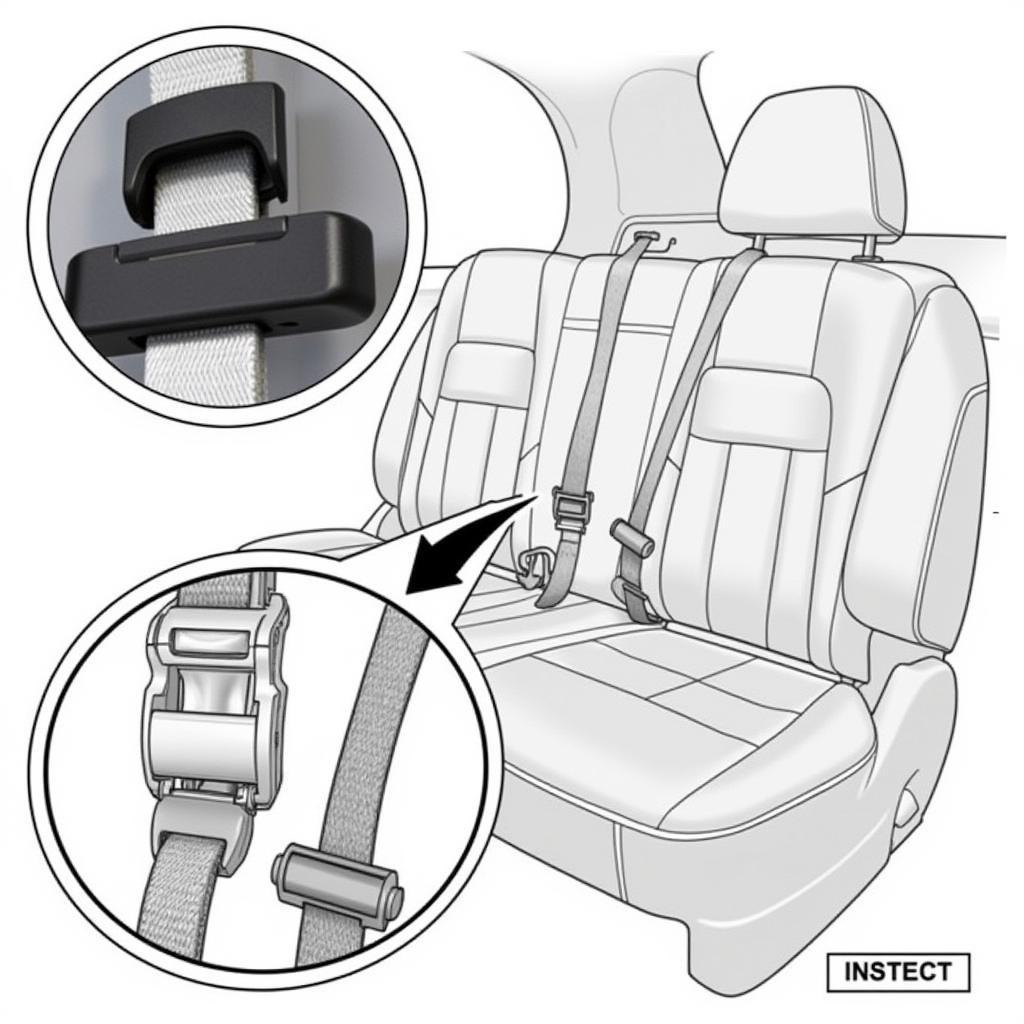 Kia Optima Seat Belt Buckle
Kia Optima Seat Belt Buckle
When to Seek Professional Help
If the above steps don’t resolve the issue, it’s advisable to consult a qualified Kia technician or an automotive electrician specializing in vehicle diagnostics. They can pinpoint the root cause using advanced diagnostic tools.
“In my experience, a faulty passenger seat sensor is the most frequent cause of this issue in Kia Optimas,” says Mark Stevenson, a certified automotive electrician with over 15 years of experience. “However, diagnosing the problem accurately requires specialized equipment to avoid unnecessary replacements.”
Preventing Future Occurrences
Once the issue is resolved, keep these tips in mind:
- Avoid Placing Heavy Objects on the Passenger Seat: This includes purses, backpacks, and shopping bags.
- Regularly Clean the Seat and Buckle: Dust, dirt, and debris can accumulate and interfere with the sensor’s functionality.
- Schedule Routine Maintenance: Regular check-ups by a qualified technician can help identify potential problems early on.
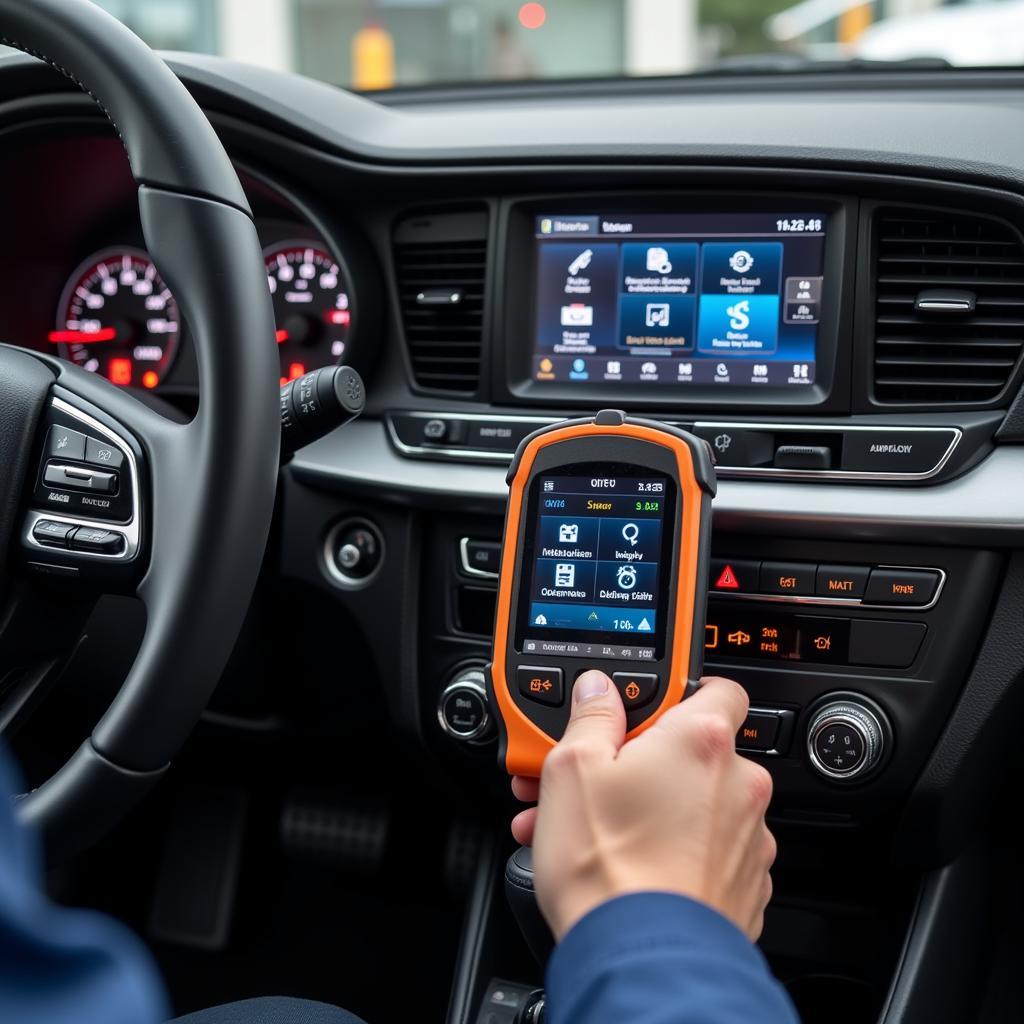 Kia Optima Diagnostic Scan
Kia Optima Diagnostic Scan
Conclusion
The Kia Optima’s “phantom passenger” problem, while frustrating, is usually resolvable. By understanding the system and following the outlined steps, you can address the issue and prevent future occurrences, ensuring a safer and more enjoyable driving experience. Remember, while a cell phone might offer a temporary fix, it’s crucial to address the root cause for a long-term solution.


